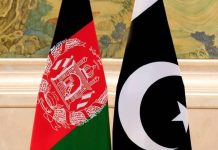NEW DELHI (Reuters) – India prepares to restart aircraft carrier INS Vikramaditya after a major overhaul. This is an important step toward realizing plans to deploy two of her carrier battle groups to bolster regional naval power to counter China’s growing assertiveness.
India and China clashed on her border in 2020, killing 20 Indian soldiers and 4 Chinese soldiers. The skirmish turns into a long stalemate in steep mountainous terrain, with tens of thousands of soldiers on both sides.
Retired Indian navy chief Arun Prakash suggested the experience could make the sea more important in future conflicts.
“The 30-month Sino-Indian military standoff in the Himalayas and China’s strategic position in the South China Sea have made it clear to Indian policymakers that naval power will play an important role as a national policy tool in future outcomes. must be,” wrote Prakash. At The Indian Express in December. India will have two aircraft carriers, one on each coast, Captain D.K. said. Sharma, a former spokeswoman for the Indian Navy, now advises on defence issues.
India’s focus is on Pakistan in the west, but given the presence of Chinese ships on key shipping lanes east of India, it would be wise for the Indian navy to make its presence felt, said Rahmat.
However, he warned that India, among other things, still lacks many support systems to make careers effective.
Indian Prime Minister Narendra Modi hailed the launch of Vikrant as a victory for the Make in India campaign to become more independent in defence. The Navy has pushed to build another launcher in-house, but political concerns, coupled with long delays and huge cost overruns associated with building the Vikrant, have left many sceptical that it will ever happen.
In his 2023-24 budget, released Wednesday, the government increased defence spending by less than 2%, further casting doubt on larger new investments in airlines. Even if it does happen, it will take years to build a third aircraft carrier.
As India is equipped with Vikrant, it will soon decide to purchase her 26 maritime attack fighters, either France’s Rafale M or America’s F/A-18. The Indian Air Force already operates a serviceable version of Dassault Aviation’s Rafale, and Boeing’s F/A-18 can carry more missiles. Vikramaditya will continue to use India’s existing Russian-made MiG-29K fighter jets.
India now aims to reduce its dependence on equipment from Russia, which now accounts for about 60% of its inventory, and the war in Ukraine has raised questions about its effectiveness and the availability of spares. The United States and other allies have proposed New Delhi as an alternative, reinforcing their own focus on the Indo-Pacific while stepping up cooperation with key regional players.
But even with the diversification of domestic production and acquisitions, experts say it could take 20 years for India to cut its dependence on Russian supplies and spare parts.
Even before the war between Russia and Ukraine, India had separately stepped up diplomatic engagement with the United States, India, Japan, the Australian quad group, the Association of Southeast Asian Nations and other countries, Solanki said. “This really accelerated after India and China clashed on the border in June 2020,” “That’s when we saw a real shift and focus towards quads, more active cooperation with France and the UK, continued cooperation with Europe, and cooperation with ASEAN countries.”
- Pacific
- China
- Diplomacy
- Magazine
- Health and Lifestyle
- South Asia
- India
- Japan
- Pakistan
- Politics
- Europe
- Russia
- Ukraine





